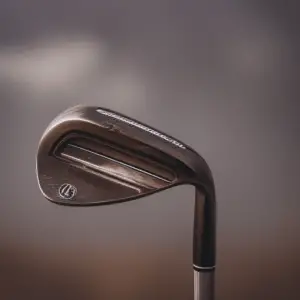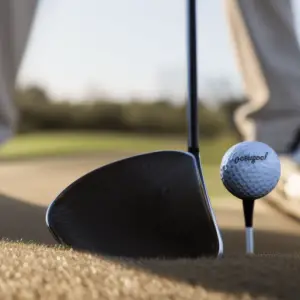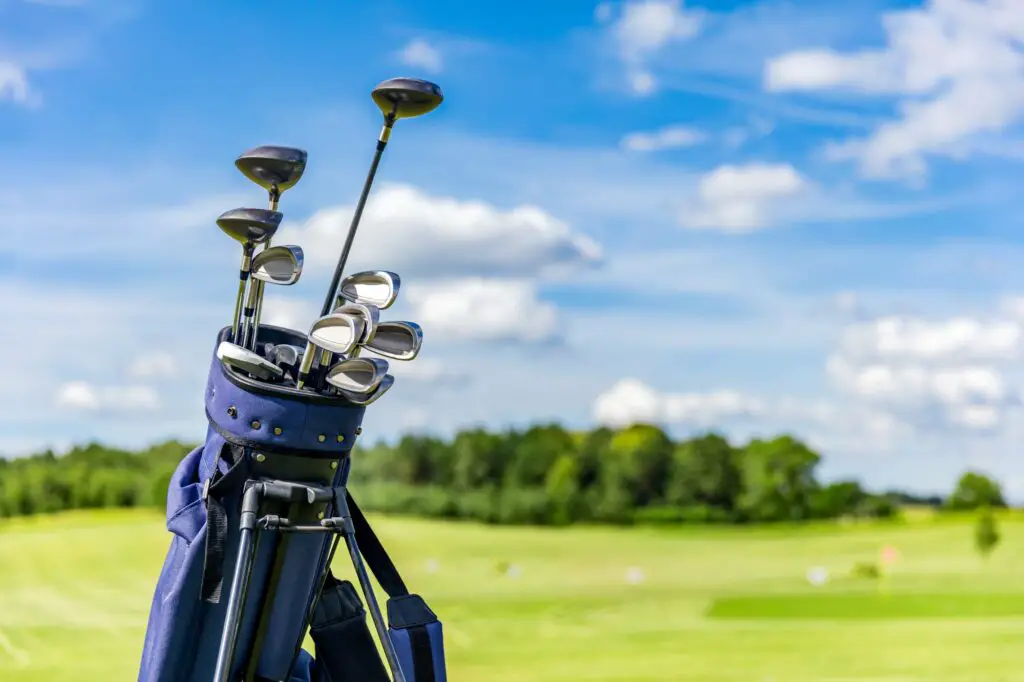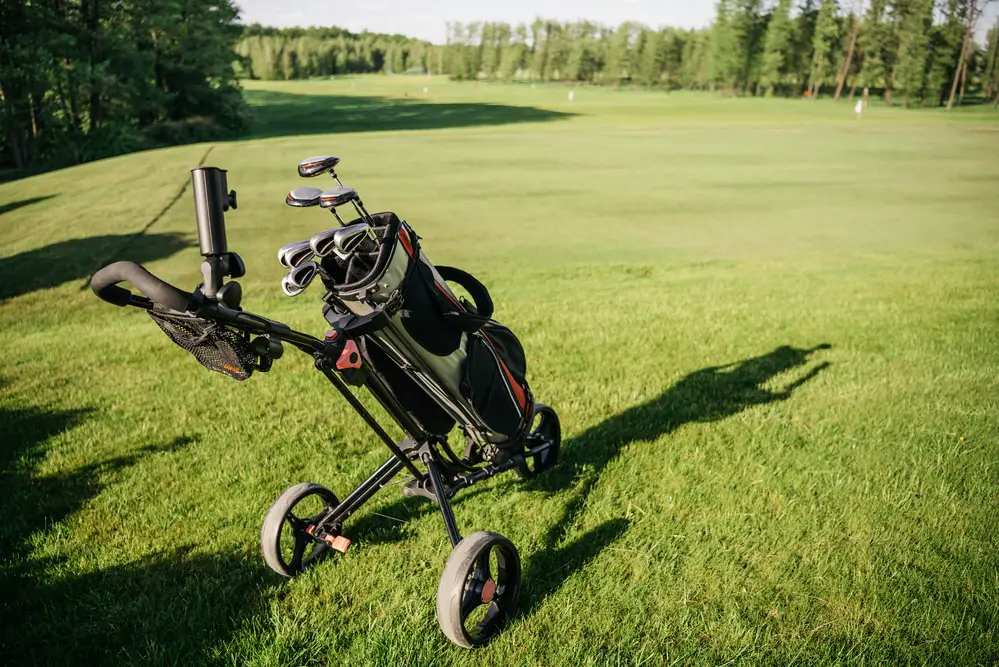Last Updated on June 6, 2023
If you’re an avid golfer, then you know that the numbers on golf clubs have a special meaning. Whether you’re looking to purchase new clubs or just want to understand what makes your current set unique, understanding this numbering system is key. From seasoned pros to weekend warriors, it’s important for all golfers to know exactly how these numbers affect their game. As an experienced club specialist, I’m here to explain what each number means and why they matter when selecting the right gear for your next round.
The first two digits of a golf club denote its loft angle —the angle between the ground and the head at address—which affects how far and high balls launch off the face of the club upon impact. The higher the number, the greater degree of loft, which translates into more backspin as well as increased carry distance and height trajectory compared to lower lofts. Additionally, many modern drivers also feature adjustable hosel settings allowing players to increase or decrease this angle depending on personal preference and playing conditions.
Finally, most irons will come with additional markings such as a ‘PW’ (pitching wedge), indicating a particular type of iron suited for different types of shots around the green. Understanding these symbols, in addition to numerical measurements, can help you customise your setup according to individual skill level and desired ball flight characteristics ensuring optimal performance out on the course!
Overview of Golf Club Numbers
Golf club numbers provide valuable information about the specs of a golf club. It’s essential to understand how these numbers are used for labelling and measuring clubs in order to make an informed decision when selecting one. That’s why it pays to know what each number means, so you can choose the right golf club that meets your needs.
The most commonly labelled feature on a golf club is the loft angle. This indicates the degree at which the face of the club points upward from horizontal, when held in the address position. The higher the loft angle, generally the greater distance and trajectory will be achieved with less effort; however, this also decreases accuracy due to increased backspin. On irons, more forgiving cavity-backs tend to have higher lofts than blade-style heads, as do hybrids compared to long irons. Loft angles typically range between 18° – 60° depending on which type of club is being measured.
In addition to loft measurements, other features such as shaft length and lie angle (the relative position of a player’s hands during address) are also indicated by specific numerical values or codes printed onto clubs, allowing users to customise their setup based on individual swing characteristics and preferences. Knowing these key elements allows golfers to maximise their performance while out on the course. To sum up, having knowledge of golf club numbers helps ensure that you purchase equipment best suited for your personal game and playing style.
Identifying Types of Golf Clubs

The numbers on golf clubs refer to the type, length and weight of the club. It’s important for a golfer to identify which club they need in order to properly play their game. This is done by understanding what each number means.
Each golf club has its own unique number that corresponds with its specific characteristics. The first number indicates the type of club – for example, 1 would be a driver, 2 an iron, 3 a wedge and 4 a putter. Knowing this can help you choose the appropriate club based on your skill level and situation.
Shaft length also plays an important role when it comes to selecting the right golf club; longer shafts are typically used in drivers, while shorter shafts are reserved for wedges and irons. Additionally, there may be extra numbers indicating other factors, such as grip size or the overall weight of the clubhead itself. With this knowledge, you’ll have all the information necessary to decide which golf clubs work best for you.
Golf is a sport where having knowledgeable equipment makes all the difference in performance levels; therefore, being able to read and interpret these numbers correctly will give any player an edge over those who don’t pay attention to them. Understanding how different types of clubs differ from one another allows players to make informed decisions about what works best for them, depending on course conditions or even personal preference. All-in-all, familiarity with how these numbers correspond can drastically improve your game!
Differentiating Iron and Woods
Golfers must understand the difference between iron and wood clubs if they want to maximise their performance on the course. Iron-clubs are shorter than woods-clubs, with narrower heads and less loft angles. The lower loft angle of an iron-club gives it a low bounce, making them ideal for hitting shots from tight lies or in windy conditions. Woods-lofts usually have higher lofts that produce more backspin and can launch shots farther distances.
Here’s a list of 4 ways to differentiate irons from woods:
- Irons tend to be shorter than woods
- Irons typically have smaller clubheads and less loft angles
- Woods usually have larger clubheads and greater loft angles
- Irons generally provide better accuracy due to their low bounce, while woods generate more distance off the tee
In summary, golfers should recognise how different types of clubs suit different needs during play based on factors such as length, head size, loft angle, and ball flight characteristics; this will help them take full advantage of each shot opportunity on the fairway or green!
Determining Loft Angle
Now that we have established the difference between irons and woods, let’s move on to loft angle measurement. Understanding golf club loft is key when attempting to make a successful shot. The numbers on golf clubs indicate the degree of the face’s tilt in relation to the ground. This affects how far your ball will travel and its trajectory.
| Golf Club | Degree of Loft | Angle Measurement |
|---|---|---|
| Driver | 10-12 degrees | 3-4 degrees upright from vertical |
| 5 Wood | 18 degrees | 6 degrees upright from vertical |
| 4 Iron | 24 degrees | 8 Degrees flat from vertical |
| 9 Iron | 44 degrees | 12 Degrees flat from vertical |
The table above provides an example of typical golf club lofts for various types of clubs. However, it’s important to note that different manufacturers may design their clubs differently, so be sure to double-check each one before making a purchase or hitting with it. Additionally, understanding lie angle measurement is also necessary when selecting a new set of golf clubs, as this affects how high off the ground the clubhead sits at the address. An incorrect lie can lead to shots being hit too low or too high, resulting in less distance and accuracy than desired. By having knowledge about both loft angles and lie angles, you can better customise your equipment for optimal performance.
Understanding Bounce Angle
Understanding bounce angle is an important part of playing golf and selecting the right equipment. Bounce angle refers to the degree of loft on a clubface, which affects whether the ball will stick or skid upon contact with the ground. There are several factors that contribute to understanding bounce angle: shaft type, head design, weight distribution, and face-profile shape.
To help you understand how these elements affect your game, here’s a guide to golf club bounce angles:
- Shaft Type – The stiffness of your shaft can influence launch conditions and spin rates. Stiffer shafts tend to produce higher spin rates, while softer shafts create lower spin rates.
- Head Design – Golf clubs come in all shapes and sizes, but some designs are better suited for certain types of shots than others. Knowing which head design works best for each shot will help you select the right club for every swing.
- Weight Distribution – Optimal weight distribution helps players control their swings more easily by providing a balance between power and accuracy during impact. Different clubs have different centres of gravity and optimal weight distributions for various types of shots.
- Face-Profile Shape – Each golf club has its own unique face profile shape that impacts ball flight trajectory and backspin rate when hit correctly; this factor determines how much distance you can gain off each shot.
- Golf Club Bounce Angle Measurement – To measure the exact amount of loft on a given clubface, use a quality Loft/Bounce gauge or protractor tool designed specifically for measuring golf clubs. This tool measures both the effective loft (or attack angle) as well as the actual loft (or dynamic lie).
It pays to be knowledgeable about golf club bounce angles if you want to improve your game; perfecting your technique using proper tools can make all the difference out there on the green! With practice and patience, any golfer can master their desired level of performance from tee to green simply by understanding basic principles such as the bounce angle explained above.
Calculating Lie Angle

Figuring out the lie angle of a golf club is essential for achieving optimal ball flight and accuracy. To calculate it, the golfer must measure the distance between the ground and the centre of the sole plate. The lie angle calculation will vary depending on whether you’re measuring an iron or a driver—irons typically have angles that range from 56 to 60 degrees, whereas drivers can go as low as 45 degrees.
Measuring the lie angle accurately requires precision tools such as specialised protractors, but many retail stores offer assistance with this process if needed. When figuring out your ideal lie angle, keep in mind that most players tend to hit their irons too high because their clubs are set up with too upright of a lie angle; conversely, they may also struggle with fading due to a too-flat setup. Adjusting your equipment accordingly can help ensure better performance on every shot.
Reading Clubhead Markings
Now that you understand the importance of lie angles in your golf clubs, let’s move on to reading clubhead markings. The numbers printed on a clubhead are vital for understanding how each individual piece of equipment will help enhance your game. There are several distinct elements which make up these markups, and they all need to be analysed in order to get the most out of your golf club.
| Element | Description |
|---|---|
| Loft Angle | Affects ball trajectory |
| Bounce Angle | Affects ball roll when it lands |
| Groove Config | Creates spin & affects flight direction |
These three components can greatly affect how well you hit the ball, so it’s important to read them accurately and understand what kind of results they may produce. Each number or letter will provide valuable information about loft angle, bounce angle, groove configuration and more! It is also essential to take into account any other features, such as weighting options, that could influence performance.
Frequently Asked Questions
How Can I Tell If a Golf Club Is Right for My Skill Level?
Choosing the right golf club for your skill level is an important part of enjoying and succeeding at this great game. It can be a confusing process, however, so it’s worth consulting with a professional who specialises in golf club fitting. A good club fitting expert will assess your swing to determine which clubs are best suited to you, as well as help you select the right ones based on their analysis and skill level assessment.
A competent golf club fitter should also have knowledge of all aspects of equipment selection, including shaft flex options, grip size and type, head design, launch angle optimisation and more. All these factors need to be taken into account when selecting a set of clubs that suit your individual needs. During the golf club selection process, they’ll evaluate not just your skill level but also how frequently you play and what kind of courses you typically play on.
Conclusion
The choice of golf clubs is a very personal one. Whether you’re just starting out or honing your game, it’s important to choose the right set of clubs for your height and swing style. Knowing the numbers on each club can help you determine whether they are suitable for your skill level. Remember that men’s and women’s golf clubs have different design features, so make sure to take that into account when selecting new clubs. Choosing the right shaft length based on your own build will also ensure better performance during play. Finally, consider the type of course you’ll be playing when making a decision – different types of courses may require specialised equipment to get the most out of every round. With these tips in mind, finding the perfect golf clubs should be easy!



